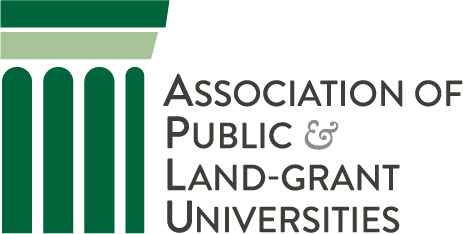A successful adaptive learning courseware initiative sustains momentum by responding with creativity to the challenges that emerge even with careful planning. That flexibility is illustrated in a group of six recently published case studies of institutions that were part of the Adaptive Courseware for Early Success (ACES) cohort through the Association of Public & Land-grant Universities (APLU) in partnership with Every Learner Everywhere.
ACES supported course redesign activities to improve student success outcomes and reduce equity gaps for minoritized, poverty-affected, and first-generation students. Each case study discusses the institution’s adaptive courseware implementation, challenges, data collection, student impact, key takeaways, and future plans. The ACES cohort targeted gateway courses with high enrollment and high DFW rates.
Many of the lessons recorded in the case studies were learned during the most challenging parts of the COVID-19 pandemic but are still relevant outside the context of emergency remote learning. For example, one common theme across the case studies was the critical importance of faculty development, whether for learning to use a new product, learning how to support student learning in that particular context, or learning to use the data it provides.
Woven into the case studies are numerous inspiring examples of adjusting to challenges during a course redesign and technology implementation to keep the adaptive learning initiative moving forward.
Sustain a pipeline of engaged faculty
The adaptive initiatives at the University of Toledo and Florida International University were both challenged by midstream changes of leadership. In both cases, a faculty member experienced with the initiative was able to step into the project leadership role. As those case studies note, adaptive learning initiatives are sustained when knowledge and capacity are built across teams, with support woven into the design and implementation of projects.
Provide synchronous tech support and facilitators
Students often turn first to faculty when they hit a technology speedbump, but oftentimes the faculty is also less familiar with the technology and encountering a point of confusion for the first time. The ACES initiative at University of Toledo expanded on existing adaptive learning implementations to include many faculty who had not previously used the courseware tools. In an anatomy and physiology course, the project assigned an undergraduate learning assistant to provide technical support to students during remote lectures as well as to help generate data analytics reports for faculty.
Related reading — When Students Turn to Faculty for Tech Support
Consider doing less
The University of Texas Rio Grande Valley also added undergraduate facilitators who helped organize small-group discussions and monitored student progress. Still, a semester into their ambitious adaptive learning initiative, the project leads started to be concerned that “change fatigue” would impact their progress. They adjusted by reducing course content in subsequent semesters. This was part of the overall approach of providing professional development and distributing work appropriately between faculty and teaching assistants.
Keep revising content and assessments
The University of Central Florida’s ACES initiative expanded on a robust existing adaptive learning program through the UCF Center for Distributed Learning. They emphasized helping faculty access and use data and analytics to continuously modify practice and exam questions and other course content based on student performance. As a result of the initiative, many faculty began to use more formative assessments.
Similarly, Cleveland State University prioritized iterative improvements on existing adaptive learning implementations in math courses. Their goal was to better leverage data analytics to inform course content and assessment.
Build a community of practice
During their ACES initiative, the University of Texas Rio Grande Valley drew in more faculty interested in redesigning introductory math courses to grow a community of practice. Dr. Tim Huber, the Director of the School of Mathematical and Statistical Sciences said, “We’re talking to each other more. There [are] new faculty coming into the department, and they see this going on and they realize there [are] other people interested in the success of students. The department is interested in the success, and the university is. All of this is really on display in this initiative.”
Get student buy-in through faculty communication
Part of the Florida International University initiative was to use adaptive learning for prerequisite knowledge check and review modules early in the term, but some students were frustrated by what felt like a repeat of high school work. The project leaders asked faculty to communicate with students explicitly about how the prerequisite modules offered more time for in-class instruction by avoiding the need to review content repeatedly during the term.
Combine a top-down and bottom-up approach
University of Texas El Paso administrators wanted to ensure that course redesign efforts focused on the courses that institutional data told them were priorities, but the project leaders also knew success depended on engaged and motivated faculty. They were able to identify a group of biology faculty who were in parallel discussions about the possibilities of collaborative course design and better aligning gateway courses. They teamed up to combine grassroots and institutional perspectives.
Keep evaluating courseware products
Like many institutions, University of Texas El Paso discovered that their first choice of an adaptive learning product wasn’t necessarily the best choice for their students and that continuous improvement may mean changes in technology. After the launch of their initiative, the biology faculty sustained their learning about the adaptive technology landscape by reviewing research literature and engaging with vendors and peer institutions until they found and switched to a product they are confident using for the long term.
View all 6 case studies


